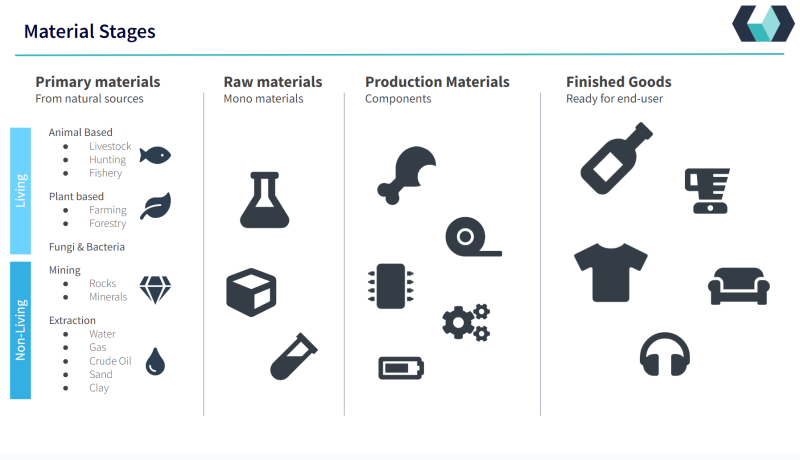Material Stages
Material Stages represent the categorization of materials as they transition through different phases of production and refinement, from extraction to the finished product. This taxonomy facilitates a structured approach to understanding material flow within Life Cycle Assessments (LCA) and other environmental impact analyses.
Primary Materials
Definition: Primary materials are raw, unprocessed resources obtained directly from the earth through natural resource extraction methods such as farming, forestry, mining, or drilling. Examples:
- Crude oil
- Iron ore
- Timber
- Cotton
Raw Materials (Mono Materials)
Definition: Raw materials, also known as mono materials, are single-substance materials that have been extracted and processed to a basic form, but not yet combined or altered to create complex components. Examples:
- Steel
- Polyethylene (PE)
- Refined sugar
- Planks of wood
Product Materials (Components)
Definition: Product materials encompass a variety of components that are used in the creation of a final product. They can include food ingredients, packaging elements, and electronic parts, which are often the result of combining or processing various raw materials.
Examples:
- Food Components: Ingredients like flour, herbmixes and preservatives used in food production.
- Packaging Components: Materials such as cardboard, glass, and plastics designed for product containment and protection.
- Electronic Components: Parts like semiconductors, resistors, and capacitors integral to electronic devices.
Finished Goods
Definition: Finished goods are the end-stage products, assembled and ready for sale to end-users, including consumers and professionals. These goods are the culmination of the material stages and are what the end-user interacts with directly.
Examples:
- Clothing
- Consumer electronics
- Packaged foods
- Vehicles
